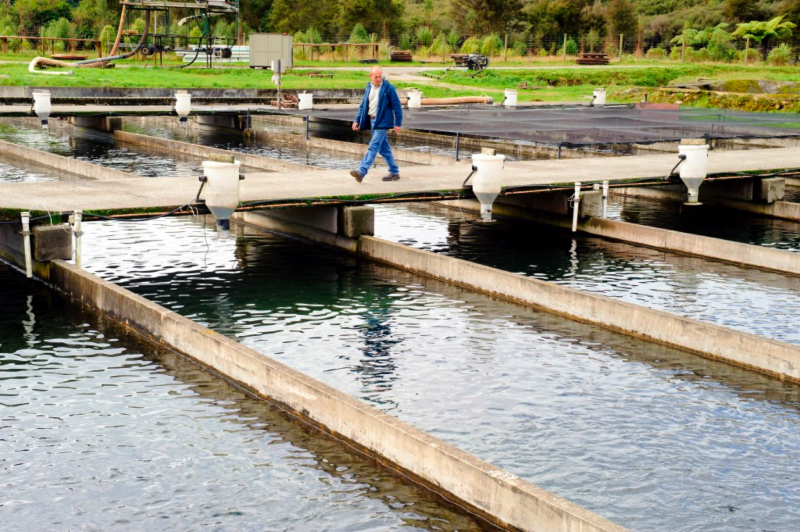
Raceways with gravity fed or pumped water for growing salmon. (NZ King Salmon)
This requires the addition of food and the maintenance of adequate water quality (oxygen, ammonia, nitrate, carbon dioxide, suspended solids, dissolved organic matter and other factors).
Water either flows by gravity or is pumped through the aquaculture venture with minimal treatment of effluent waters. Water is not recirculated and treated within the farming operation. In some cases, incoming water may be filtered (and sterilised) and effluents filtered sterilised and nitrogen wastes removed.

AKVA flow through system
An example of flow through aquaculture in New Zealand is the use of diverted river and spring flows through raceways to rear salmon, water pumped through raceways or tanks for abalone and salmon, or the use of net pens in hydro channels. The water flowing through the farm brings oxygen and flushes wastes away.

Net pens in hydro canals growing salmon, Mount Cook Alpine Salmon (C Searle, Sashimi Group)
The practice of intensive flow through aquaculture is both popular and widespread around the globe and is applied successfully to a wide range of species. A summary of flow through aquaculture is provided at the following links.
One issue associated with flow through aquaculture is waste and nutrient removal before the water is returned to natural waterways. A plethora of technologies have been developed to achieve environmentally sustainable operations. The removal of dissolved nitrogen and other nutrients in purpose built wetland systems is popular.
Solid waste removal is reviewed at the following link: Solids management and removal for intensive land-based aquaculture production systems
Solids management and removal for intensive land-based aquaculture production systems
There is limited publicly available information, within the New Zealand context, to give any reliable costs and potential returns for intensive flow through farming systems. The expertise is however available to be able to do this relatively easily. Many of these farms have however been operating in New Zealand for many years – some for decades. This is an indication that well designed and well managed systems are both economically and environmentally sustainable for particular species